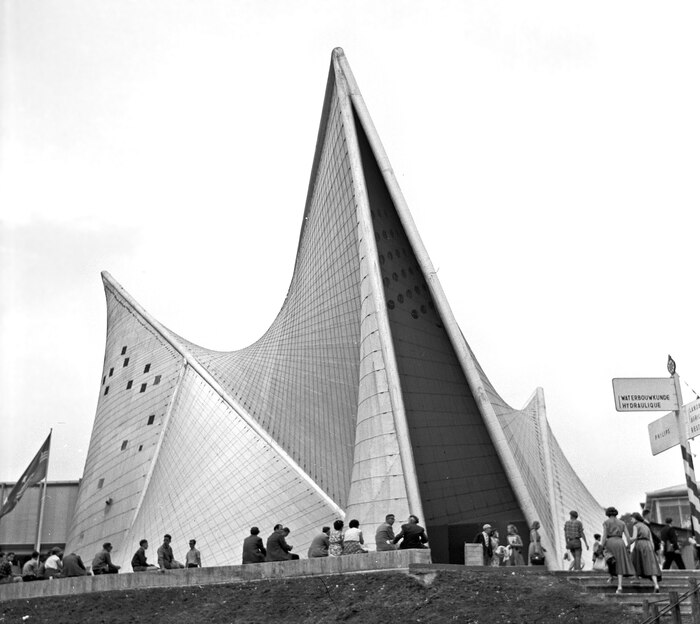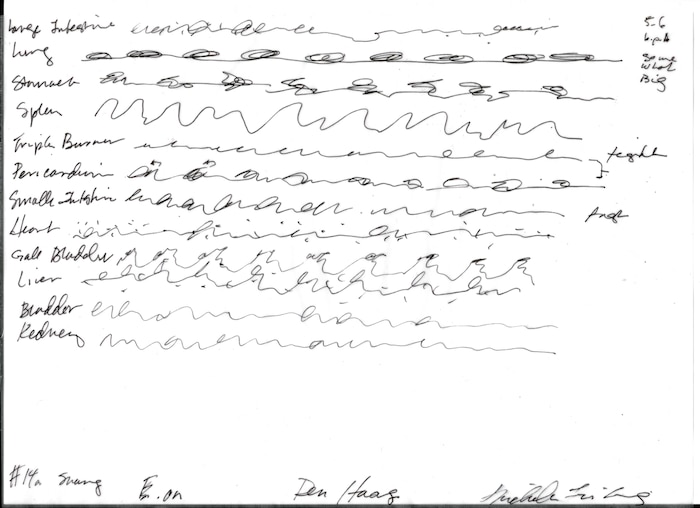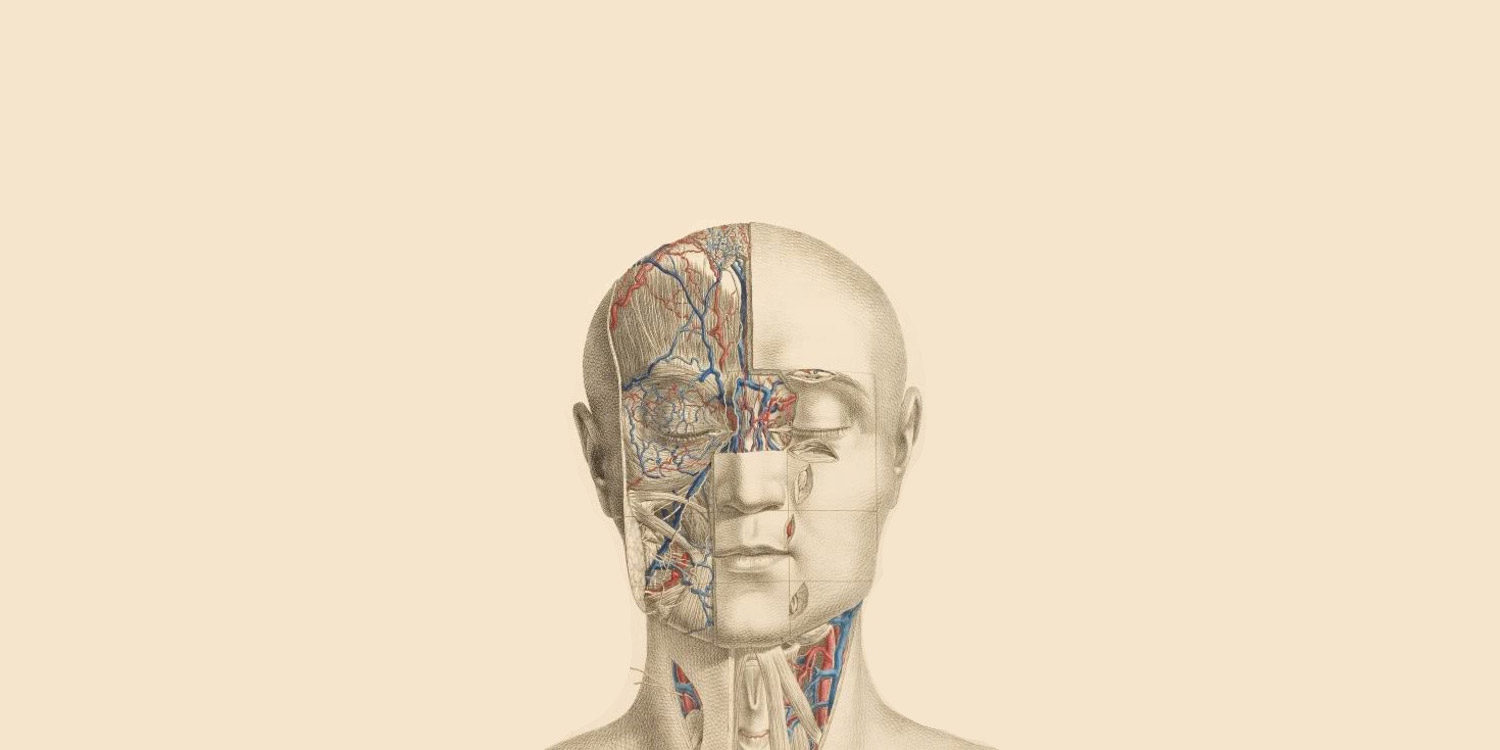Listening to Space
The innovative 4DSOUND system allows you to hear music in four dimensions. Its founder explains how some artists have taken advantage of its unique set-up
Building on ten years of research, development and experimentation in spatial sound technology, 4DSOUND opens up new possibilities to create, perform and experience sound spatially. 4DSOUND enables vivid sonic environments that blur the boundaries between the real and the imagined: the world of sound we know, and a world beyond. Sound appears as a physical entity that can move infinitely far away or come intimately close, transcending the actual space you are in. The listener is encouraged to explore the space, moving between blocks of sound, touching lines of sound and walking through walls of sound. 4DSOUND closely collaborates with a growing range of composers, musicians and interdisciplinary artists to develop new forms of integrated spatial music performance and sound design.
ABOUT THE 4D.Animator
The 4D.Animator software is a tool that has enhanced the creative practice of composing and performing with space. It’s dedicated to visualizing the spatial process in real-time. The visualizations show how sound sources of different shape and size move and interact in the continuum of space, relative to the floor and columns of a 4DSOUND system that contain actual loudspeakers. The 4D.Animator provides a comprehensive overview of the spatial composition as a whole. The software was originally programmed and conceived by Luc van Weelden.
A QUICK NOTE ON THE EXAMPLES BELOW
The compositions presented in this article are recorded in the 4DSOUND system with a binaural head and/or in-ear stereo microphones. The videos are real-time captures of the 4D.Animator software visualizing the compositions as they have been originally created by the artists in 4DSOUND. The camera viewpoint does not necessarily coincide with the recording position of the binaural microphones.
For an optimal listening experience, please use headphones at all times. Try listening to the recordings while watching the visualizations and follow the movements and manifestation of the sounds in space. Or listen with your eyes closed and focus on how the sounds are articulated in the actual space you are in. Try listening to it in different spaces, at home, in a large hall, outside... Each environment will change your perception of the recording. Paul Oomen
If we listen closely to electronic music, it resembles what we hear when we listen to space. Forms emerge in flashes, flickers, pulses and bursts, they seem to change shape and location caused by involuntary psychoacoustic stimuli. Sonic shapes and textures evoke images of energy moving in patterns through space. The way we piece these associative spaces together in our mind relates to how we recognize sound moving in the world around us.
There is much spatial information inherent in the sound design of electronic music. For example, playing with loudness and intensity can make the sound appear to be at varying spatial distances. Shifting rhythmic lines of pulses and pitches are suggestive of movements in space with distinct speed and directionality. Changes in timbre and texture are associated with a change of distance, elevation and angle of the sound in relation to the listener. Patterns of delays and diffusion are recognized as reflections of a sound from surrounding surfaces, buildings and objects, evoking an spatial environment.
The array of procedures often used in electronic music, such as high- and low-pass filters, comb-filters, low-frequency oscillation, delay, pitch shift and reverb, all have an equivalent in how we perceive sound in the physical world. Sounds transform according to their spatial properties – they exist spatially. Therefore, the way we listen to space can be considered of distinct influence on the development of electronic music as a musical language.
Sound Objects
In the early 20th century, way before electronic music took flight from the early 1950s on, composer Edgar Varèse asked us to think about sound in terms of its “mass” and composing music based on “energy and motion.” He imagined his music as “sound objects floating in space.”
The idea of the “sound object” marked a paradigmatic shift in thinking. Sounds were set free from their traditional rhythmic, melodic and harmonic relationships, and instead appreciated as “things in themselves.” Influenced by the rapid industrialization of this era, Varèse started to categorize sounds according to physical and material qualities. In so doing, he paved the way for an endless variety of noises and percussive sounds to be brought into the musical conversation.
Varèse’s “Poeme Electronique” was originally conceived for the Philips Pavilion at the Brussels World Fair in 1958, one of the largest-scale endeavors in the field of spatial sound up until today. Using an estimated 400 speakers throughout the interior of the Pavilion, Varèse created an installation geared towards experiencing sound as it moves through space.

One of the very few actual electronic pieces Varèse created, it can be considered the composer’s most explicit attempt to establish a new form of musical narrative using sound objects in space. The piece opens with the sound of a large church bell that fills the room. The listener is fully immersed inside the object. Later in the piece, the church bell reappears but this time softer and muffled, suggesting a distance between the listener and the object. Tones grow and diminish in intensity, sounding like lines passing through the space that are coming towards or moving away from the listener.
Sequences of short percussive pulses suggest a constant shifting of position, density and vicinity of the sounds. Amidst abstract electronic sound, various sounds from the world around us enter the stage: pneumatic drills, a jazz drum solo, voices and a church organ provide the listener multiple, sometimes contradicting spatial perspectives.
Essential to our recognition of these sound objects are their dimensional characteristics. For example, the sounds produced by a mosquito are not only much softer than those produced by an airplane, their energy is also spread differently. Whereas the mosquito’s sound is concentrated from a minuscule point in space, the airplane’s spatial volume occupies several hundred cubic meters, forming a dense area of sound. Sound sources of different dimensionality also behave differently at varying distance. The loudness of a sound decreases with distance, and the higher frequencies decrease relatively faster than the lower ones. But whereas a mosquito is already inaudible at a few meters, the airplane is still audible at several kilometers distance. What Varèse’s treatment of sounds in “Poeme Electronique” points toward, is that each sound object carries its own inherent physical and material characteristics, which determine its dynamic behavior in space.
Sound Localization
The human ear has the ability to localize sound objects omnidirectionally, meaning from left to right, in front, behind, above and below. In the spatial version of his track “Gravity Well,” electronic music producer Max Cooper works intently with the positioning of sound objects from all directions.
The spatial narrative is carefully built up by introducing the listener to each direction step by step. In the beginning of the piece one becomes aware of the space beneath, by percussions crackling below the feet. The main pad introduces a width to the space by slowly swaying from left to right, accompanied by sparkling bells on both sides. When the beat comes in, the hi-hat articulates the crossing direction by moving back and forth through the space from front to back. And at the end of the piece, the listener is left behind with tiny sounds that continue to pick above the head.
What are we actually listening to when we localize a sound? First of all there is the varying arrival time of the sound in the left and the right ear, a phenomena called interaural time difference. If the arrival time is shorter in one ear, we perceive the sound to be localized on that side. Then there are subtle spectral filterings of the sound dependent on the shape of the auricle, which determine orientation of the sound being in front or behind, and above or beneath. Generally sound appears to be brighter when above and more muffled when beneath the listener, but the exact composite of these filters is highly refined and different for every individual as each pair of ears has a unique shape.
Finally, there are near-field reflections of the sound bouncing off the shoulders, the floor or any surfaces and objects in between the listener and the sound. These result in the sound arriving not once, but potentially multiple times in both ears with very small time and level differences, providing the listener with subtle information on the directional angle of the sound.
The intelligence of spatial hearing is remarkable. Without effort we are able to differentiate points in space accounting for recognition of the sound object, our physical positioning and orientation in space, the anatomy of our body and complex environmental circumstances. When we listen, we instantly understand much more about space than we are able to rationally process.
Movements, Rhythm and Pitch
What we gather from the way we localize sounds, is that sound as perceived by the listener is inseparable from its spatiality. So when a sound moves in space we hear a complex modulation of multiple dynamic filters, phase delays and pitch-shifts. As a result, the character of the sound can transform entirely by the speed, direction and shape of the movement.

Michelle Lewis-King creates bespoke sonic compositions by utilizing Chinese pulse diagnostics to read the interior cosmological landscape of another person.
She then interprets the pulse reading of the subjects into sound movements flowing through space, turning the interior world of the body into an exterior landscape of sound.
Following the tradition of Chinese medicine, the inner organs are represented by five elements (fire, water, metal, earth, wood). These elements are sonically sculpted in space with each having their own behavior and dimensional qualities as sound objects.
Interestingly, the rhythms and pitches of the sound elements in Lewis-King’s works are resulting from the speed and shape of their spatial movements, as well as the wave-form frequencies of the body’s inner organs (as Lewis-King records from each pulse reading session in her notations). As the movement flows repetitively in and out of the space, it creates peaks of intensity at its closest point to the listener, which they experience as the pulse.The speed of the movement determines the perceived frequency of the pulse, while the shape of the movements are recognized as a distinct waveform of the pulse. In “Pulse #14,” the circular movement of the earth element produces a sinusoidal smooth wave with weak attacks, while the metal element is attracted to the center of the space like a magnet and then shoots back into the distance, producing a sawtooth-like wave with long increase, sharp attack and short release.
The pitch of each sound element is subsequently influenced by the speed of the movement, causing a doppler shift. When the sound moves towards the listener, each successive wave is emitted from a position closer than the previous. Hence, the delay time between the waves is reduced, causing a perceived increase of frequency.
Conversely, if the source of waves is moving away from the listener, each successive wave is emitted from a position further than the previous. The delay time between waves is now increased, causing a perceived decrease of frequency.
For example, in “Pulse #16” the fire element moves away from the observer, resulting in a slight downward pitch-bend, while the metal element continuously moves towards the observer with increasing speed, causing a subtle pitch rising with the attack of the pulse.
Reflections and Delays
In the world around us, we often hear delays as they are caused by walls or other objects in the surrounding that reflect sound. The distance between a wall and a sound source determines the delay time of the reflection, proportionate to the speed of sound which is ca. 340 m/sec.
When a sound source moves in space, the delay times of reflecting walls start to shift accordingly. These subtle modulations in the response from the environment help to localize the changing position of the sound and to recognize its pattern of movement.
Delays are one of the indispensable elements in techno sound design. With the spatial re-interpretation of his album Muscle and Mind, techno artist Oscar Mulero investigated and deconstructed his signature sound and evolved it into a fully spatial approach. In his track “Mentally Induced Action,” Mulero created a fizzing orchestra of subtly shifting delays by sending the main pad, hats and cymbals to reflect onto two different constellations of walls, visualized by the red and green surfaces. The main pad circles vertically around the space and reflects onto the red wall on the far left, creating a distinct single delay of the direct sound coming from one side.
The hats and cymbals – the static blue plane on the right side of the space and the flickering pink surface – reflect onto the green walls that are surrounding the space, creating a dense echo of noise from all directions that makes the listener lose orientation.
Reverberation and Diffusion
Moving from single reflections to the complexity of space as a whole, a reverb is defined by an infinite amount of reflections that all have tiny differences in delay, dependent on the shape and distance of the walls and ceiling, and the position of the sound source in space. Most of the time, what we hear are not individual reflections but a filtered response of the sound that we recognize as the dimensional and material characteristic of the space in its totality. Think of the short and loud response from a bathroom, resulting from the hard reflecting marble and small size of the space, while in a cathedral the spatial response is long and smooth, caused by the multiple reflections across large distances between stone walls.
Sound exists essentially in a spatial environment. When we listen to sound we always hear a combination of the direct source with its complex spatial properties, the early reflections as the sounds reverberates initially off the surfaces, walls and other objects in the space, and the late reflections as the reflected sound waves keep on bouncing off the surfaces up to an order of 12 times.
A contemporary master in working with reverberation as an aesthetic in itself, is Mexican composer Fernando Corona, AKA Murcof. His vast landscapes of sound are evocative of dark and melancholy spaces that can take up cosmic proportions. In his spatial composition “Spring in the 4Dimensional Gardens” we hear a diffusion of the sounds, meaning sounds never come from one point only but from a wide field of reflections smeared across the space. To achieve this, Corona applies multiple spatial sound techniques. He places multiple reflective walls on all sides of the space at different distances, creating a dense surrounding field of unequal reflections of the sounds in the space. One can almost start to hear the reverbs within the reverb.
He also applies a delay shape directly to the large harpsichord that is slowly rotating around the space. This shape is represented by the weird looking cluster of moving lines that follows the sound object. Each points in this shape represents a particle of dynamic delay time. The more distance the particle has to the original position of the source, the longer the delay time will be. When the particles are relatively static, the effect is much like a reverb with unequal reflections. At its most dynamic, the particles create a noisy swarm that does not sound much like its original source material anymore. In Corona’s work, the shape literally “clouds” the sound of the harpsichord even further, adding yet another layer to the total diffusion of his sounds in space.

